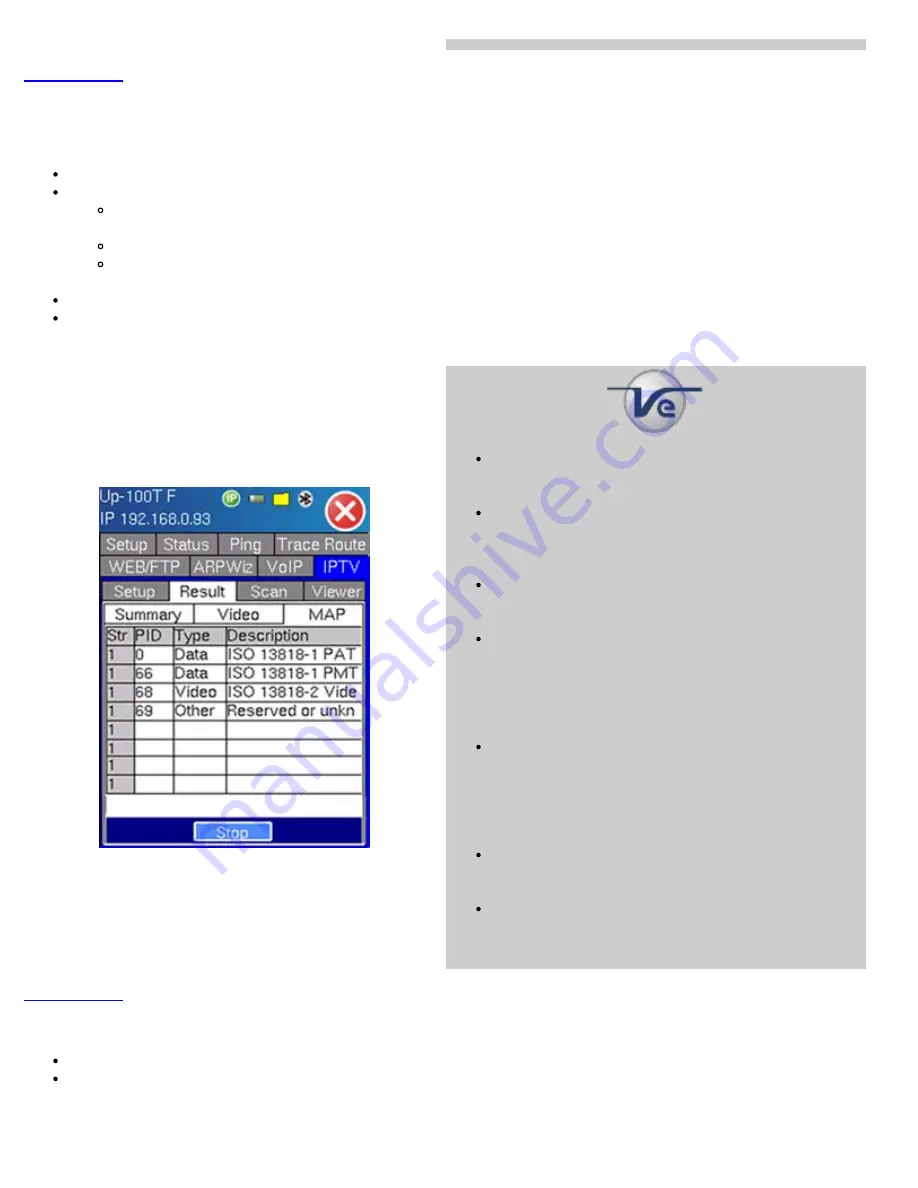
IPTV Result MAP:
The MAP table provides a summary of the stream composition and the programming present.
Str
- Indicates stream number
PID
- Packet Identifier is a unique channel address identifier.
PID enables identification and reconstruction of the programme and is used in conjunction with the Programme
Service Identifier (PSI) packets.
The decoder uses the PID and PSI to identify the Programme Association tables (PAT).
PAT contain Program Map tables (PMT) that point the decoder to the packets associated with the channel or
programme such as video, audio and data content in the transport stream.
Type:
Payload description
Description:
PID description on a per stream basis
IPTV MAP Table
MPEG-2 TS
A Packetized elementary stream (PES) is a continuous
traffic stream of 188-byte packets carrying the digital
signal.
Since single/multiple programs can be carried per
stream, a reference point from which the STB can
synchronize and start the actual decoding from, must be
provided.
Each 188-byte packet consists of a 4-byte header
containing this reference point which is a PAT table and
a PID value equal to 0.
The Packet Identifier (PID) contained within the 4-byte
header, is a unique channel address identifier allowing
identification and reconstruction of the program. The
PID is used in conjunction with the Program Service
Identifier (PSI) to identify Program Association Tables
(PAT) which in turn hold Program Map Tables (PMT).
The PAT table is also the table containing all program
information ensuring the consumer receives updated
program changes. The PAT table lists all the programs
in the transport stream and associates each program
with another PID, that holds a program map table
(PMT) as its payload.
PMT lists the Video, audio and eventual encryption
information. The Payload Structure Identifier (PSI) table
needs to be consistent with the PID table.
PAT and PMT are inserted into the stream so that the
decoder performs correctly. These two items should
always be present.
IPTV Scan -
displays the
Scan
results;
Channel
- Channel number (IP address:UDP port) being scanned
Zap time (ms)
- Also known as inter-channel change delay. Time between a channel leave request is sent and the
receipt of the first byte of data from the new multicast channel. It is the IGMP Join L Channel Switch Delay (STB
dependent). Channel zapping should be < 700ms.
MX100/120 e-Manual D07-00-004 Rev A04
Page 98 of 115
















































